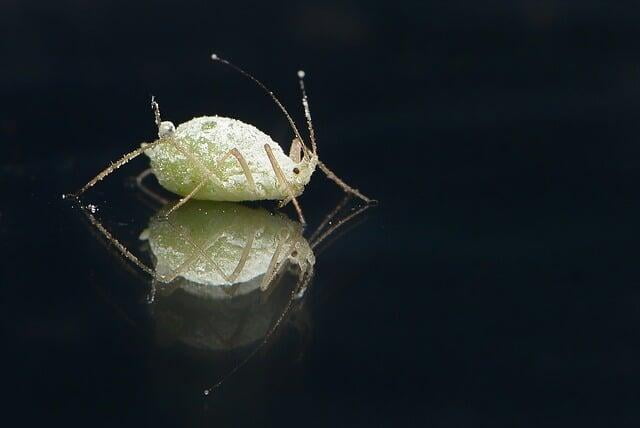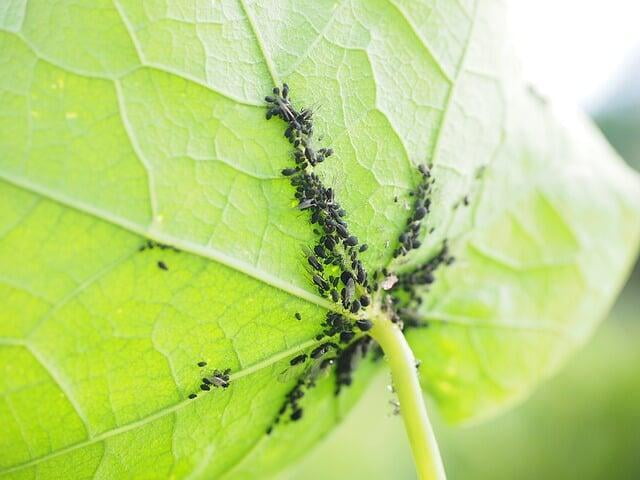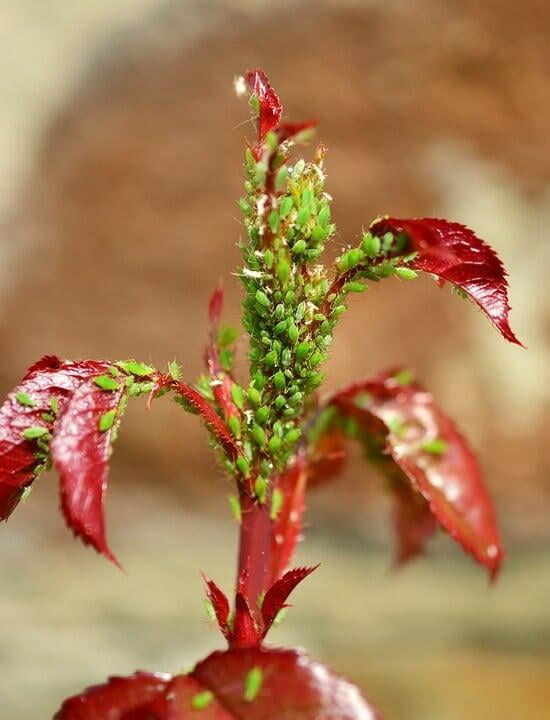
Aphis Gossypii (aka Aphids) are small-bodied insects which belong to the family Aphidoidea and the order Hemiptera. Commonly known as plant louse, greenfly, and blackfly, they also exist in pink and brown.
About 5,000 species of aphids have been identified, and around 400 of these impact food and fodder crops. A majority of aphid species are flightless (wingless), but some species possess wings. These species prominently attack crop families like Cucurbitaceae (pumpkin, zucchini, watermelon, gourds, etc.), Malvaceae (okra, cotton, durian, many flowering plants), and Solanaceae (potato, eggplant, tomato, many medicinal and flowering plants) annoying the gardeners.
How do aphids harm plants?

Symptoms of damage/Signs to watch out for
- Stunted growth
- Wilting or dieback of shoots
- Damage to/Destruction of new flush growth.
- Curling of tender shoots
How to protect against aphids?

Preventive Measures
One should actively start watching out for Aphid infestation 4-5 weeks post sowing the seeds. Following techniques can work as preventive measures:
- The simplest and the easiest – growing aphid-resistant varieties.
- Remove weed plants, which acts as a host plant for an increase in aphid population.
- Place aluminium foil around the base of the plant. The foil will reflect sunlight on to the underside of the leaves, which will fend off aphids.
- Apply oil or any other sticky substance around the tree trunk to prevent ant movement.
Remedial Measures
Depending upon the extent of the infestation, some of the following may help:
- Spraying the underside of leaves with a mild soap spray or neem oil.
- Introduce natural enemies (predators like wasp and ladybug) of aphids to your garden.
- Chemical management/spraying of insecticide (can be used for flowering plants but not preferred for food-bearing plants).
- If nothing else works, the last option is to collect and destroy severely affected plants to save other plants.
Happy Growing!